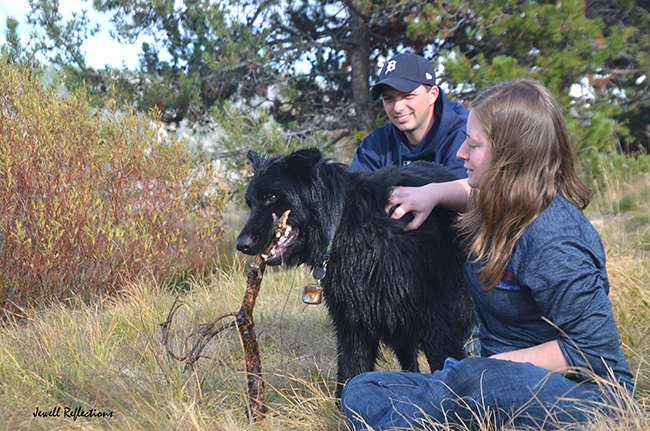By Fran Jewell
One of the reasons many of us live here in the Wood River Valley is because of the many hiking opportunities for us with our dogs. Unfortunately, there are dogs lost all the time in our national forests due to chasing animals, not coming when they are called, or sometimes because something scared them into running away. Dogs and their owners that come from the cities may have no idea of the dangers of allowing a dog to run loose without prior training.
I have two very simple suggestions, although they are no guarantees, especially in place of the well-trained dog. The use of collar bells and neck whistles can help to keep your dog safe.
I did search and rescue for 10 years with two of my dogs. One of the things I learned about was using a collar bell so I could hear where my search dog was when out of sight, especially at night. The cadence of the bell chimes also let me know if my dog was “in drive,” meaning on a wild animal or bird chase. Once a dog moves into that drive, if his drive to hunt or chase is stronger than his desire for food, it can be virtually impossible to get your dog back. However, if you buy a very good whistle that many hunting dog owners use, you can “charge” that whistle to make the sound meaningful when your voice may no longer be heard by your dog. Charging the whistle means making the sound of the whistle important to your dog. If yours is a ball-crazy dog, whistle, then throw the ball for your dog. If your dog is extremely food motivated, use your dog’s favorite treat. Use the whistle, and then give him that treat. Do this many times before you go into the woods. It is a basic classical conditioning response. The whistle then means treat or a ball toss. If your dog loves the ball more than chasing a scent or an animal he sees, he most likely will come running back.
The second tool is a collar bell. I have NEVER, in all the time I have had dogs with me in the wilderness, come across a wild animal. Why? I always use collar bells on my dogs on walks. The wild animals hear the bell and leave the area. That way, your dog never sees the animal to start the chase. This might not work if your dog already associates the smell of a deer, etc., that he has seen before, and uses his nose to find scent on the ground. Secondly, you can hear where your dog is if he wanders too far out of sight. And, lastly, others on horseback or riding mountain bikes can hear you coming. NEVER let your dog run up to either mountain bikers or horse riders. It can mean serious injury to everyone. I recommend a Swiss bell as a collar bell. The sound goes farther and it is easy to clean snow out of. Jingle-type bells are simply not as effective.
So, while these are tools to help you, they are no excuse for not teaching your dog a 100 percent life-saving recall BEFORE you go into the woods for a hike with them.
Our wilderness is glorious to recreate in; however, using wise sense about your dog can save its life.
Fran Jewell is an IAABC Certified Dog Behavior Consultant, NADOI Certified Instructor and the owner of Positive Puppy Dog Training, LLC in Sun Valley. For more information, visit positivepuppy.com or call 208-578-1565.



